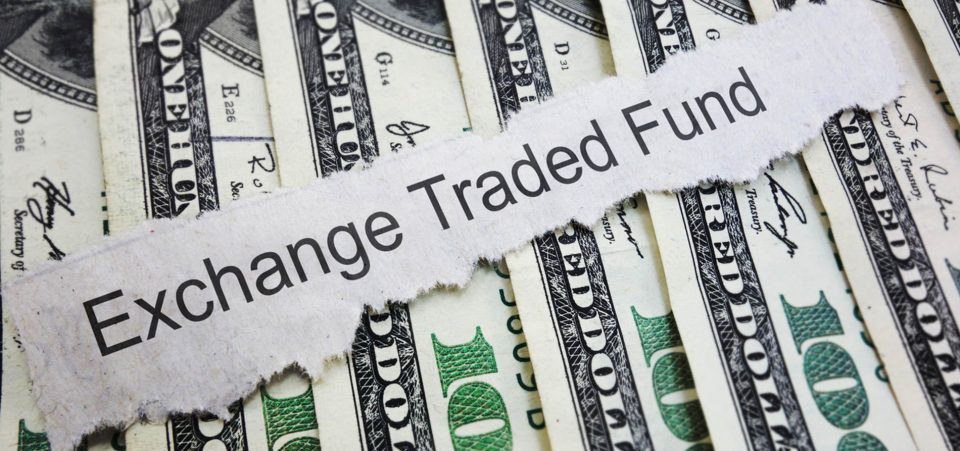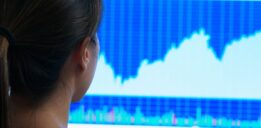Passive Investing Could Pose a Systematic Threat to Investor Portfolios by Way of Market Collapse
Investors’ love for exchange-traded funds (ETFs) has been prevalent for quite awhile now. Passively managed assets have grown from 12% of the market in 2000 to 36% today. Because of their low cost, convenience, and diversification, investors love them. ETFs are assumed to be a benign way to obtain exposure to a desired asset class. But is that really true? I’ll summarize three specific reasons why this pervasive assumption may be setting the stage for a market collapse.
By now, most investors are familiar with how popular passive investing has become. ETF inflows have exploded in record years, smashing records in 2016 as well as Q1 2017. This isn’t simply an American phenomenon, but a global one as well. The shift away from actively managed funds to pre-packaged ETFs is well-documented. Theoretically speaking, there’s nothing wrong with this transition. Why pay exorbitant fees to an active manager when ETFs can accomplish the same thing? In many cases, overall returns are better on a fee-adjusted basis.
But, like most things in life, there’s such a thing as “too much of a good thing.” The herding into passive investment vehicles is creating structural risks in the market. What looks benign from a distance could in fact be a ticking time bomb. The historically low market volatility could be telling us something very important. Most investors remain unconcerned because the market is so serene. But investors be warned—the serenity will not last.
Passive investing is probably one of the primary causes of the massive melt-up and pervasive overvaluation seen in the market today. But we think these conditions are close to finality. Below, we give three compelling reasons why the facade of market calm is an artificial construct poised to reverse.
Reason #1 – Misallocation of Capital
At its core, the stock market is supposed to be priced on present and future earnings expectations. The ones that generate the most after-tax profit generally are awarded higher valuations. While many other factors are considered depending on the industry (i.e. technology vs. consumer staples) or classification (i.e. growth vs. value), it all comes down to earnings. Or at least it used to.
What passive investing has done is skew the valuation-to-earnings relationship. For example, when investors herd into ETFs like the SPDR S&P 500 ETF Trust (NYSEARCA:SPY), they’re buying a portion of all stocks in the S&P 500. Needless to say, not all of these companies are necessarily investment-grade quality. Many of them are downright dangerous. Some research suggests that SPY allocated 23% of capital in risky stocks not suitable for many portfolios. (Source: “Hidden Trigger For Another (Flash) Crash: Passive Investing,” Forbes, July 20, 2017.)
Reason #2 – Unjustifiable Rise in Valuations
Not only has indexing raised the valuation of many of the laggards, it’s raised them to valuation levels of the top-weighted stocks. Today, almost everyone owns Amazon.com, Inc. (NASDAQ:AMZN) or Microsoft Corporation (NASDAQ:MSFT) stock and others in one way or another. The mass popularity of indexing means top stocks have become over-invested. In past times, technology and growth stocks weren’t necessarily mass-owned. When everyone is on one side of the boat, it’s prone to capsize.
There’s hard evidence linking the increase in ETF ownership to rising valuations.
Research indicated that of the $6.7 trillion in enterprise value added to the S&P 500 since 2013, only six percent is attributed to after-tax earnings growth. Six percent! Meanwhile, 76% is attributed to an increase in earnings multiples outside of earnings expansion. If that doesn’t scream unsustainable, I’m not sure what does. The other 18% is attributed to net debt increase, presumably from corporate share buybacks fueled by low interest rates.
Reason #3 – Systematic Risk Is Increasing
It’s hard to exactly quantify how big risk has become. Volatility has been suppressed for so long, the exchanges haven’t been really “tested” by a prolonged crisis. But it stands to reason, if the same dynamics responsible for the multi-year market melt-up reverse, things could get disorderly quickly. There’s a $5.3-trillion passive investment pool that keeps building.
We’ve already seen multiple “flash crashes” plague the market. In a nutshell, these were caused by algorithmic trading programs shutting off when volatility got too high. With millions of investors herded on the long end, the selling pressure (at some point) will be immense. This could easily result in a flash crash-type scenario again, except in sustained fashion. Picture a market collapse occurring over several days instead of an hour or two. Instead of recovering much of the losses, the market closes limit down. Circuit breakers get triggered and the market simply halts trading.
In previous times, there’s little that could generate that type of sell pressure. The terrorist attacks of 9/11 or the Lehman Brothers Holding, Inc. collapse come to mind. But the excesses built up through passive investing have the potential to cause a similar market event. Time will tell whether the risks posed by voracious passive investing actualize or not. But the possibility of a devastating outcome is certainly more than remote.







